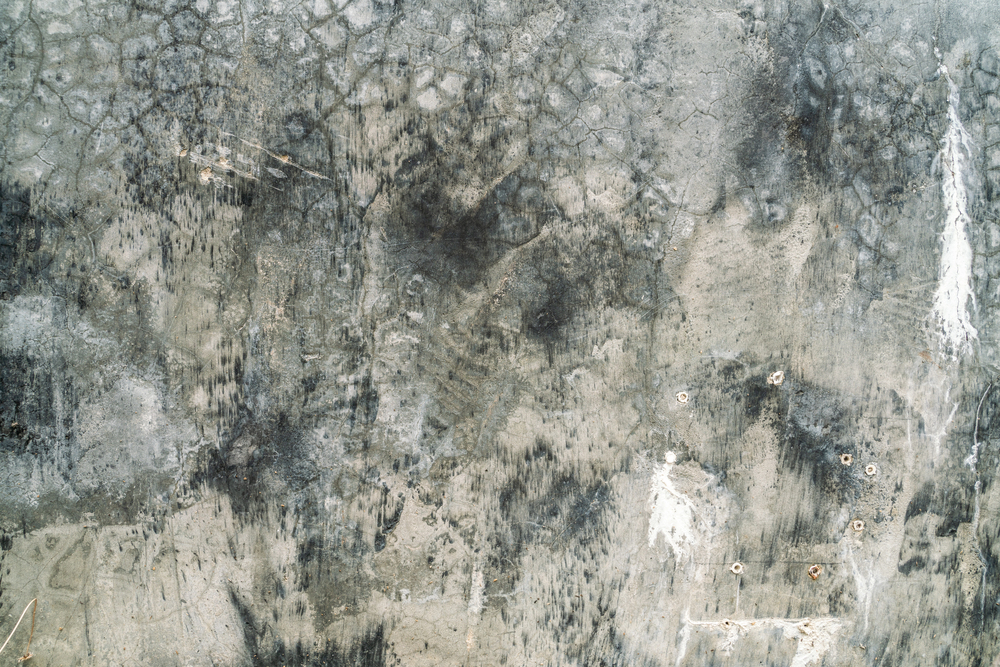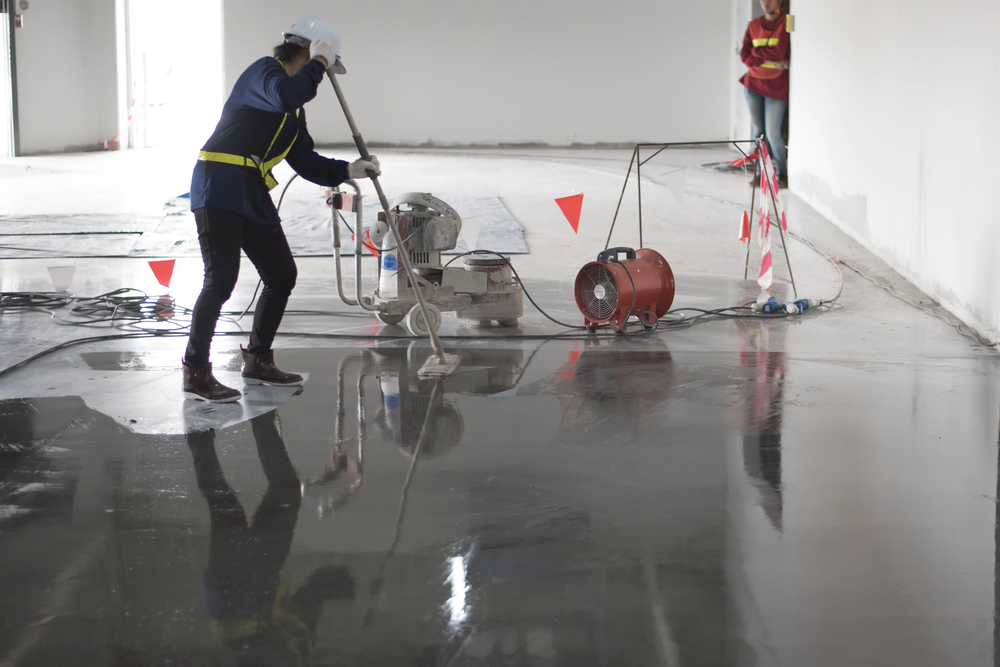
Are you ready to redefine your living or workspace? Polished concrete flooring is more than just a trend; it’s a transformative choice that adds elegance and durability to any environment. This ultimate guide will walk you through everything you need to know about embracing this chic flooring option. From the myriad styles available to the step-by-step installation process, we’ll explore how polished concrete can elevate your space’s aesthetic while ensuring practicality. Say goodbye to ordinary floors and hello to a sleek, modern look that’s easy to maintain and built to last. Whether you’re renovating your home or designing a commercial space, polished concrete offers versatility, functionality, and a raw beauty that’s hard to resist. Join us on this journey to discover how polishing your concrete can turn your vision into reality, creating a stunning foundation for your lifestyle or business. Let’s dive in!
Transform Your Space: The Ultimate Guide to Polished Concrete Flooring
Benefits of Choosing Polished Concrete

Polished concrete flooring offers a plethora of advantages that go beyond its sleek appearance. One of the primary benefits is its durability. Unlike other flooring options that may wear down over time, polished concrete is incredibly resilient and can withstand heavy foot traffic without showing signs of wear and tear. This makes it an excellent choice for both residential and commercial spaces that see a lot of activity. Moreover, its hard surface is resistant to scratches and stains, ensuring that your floor remains pristine for years to come.
Another significant benefit is the low maintenance required for polished concrete floors. Unlike carpet or wood, which need regular cleaning and sometimes even professional intervention, polished concrete is easy to clean with just a mop and mild detergent. Its smooth surface makes it difficult for dust and allergens to accumulate, contributing to a healthier living environment. This attribute is especially beneficial for households with pets or individuals with allergies.
Energy efficiency is another often-overlooked advantage of polished concrete flooring. The reflective surface of polished concrete can help to increase natural lighting in a space, reducing the need for artificial lighting during the day. Additionally, concrete has thermal mass properties, which means it can absorb heat during the day and release it at night, helping to regulate indoor temperatures. This can lead to lower energy bills and a more environmentally friendly home or office.
Types of Polished Concrete Finishes

Polished concrete is not a one-size-fits-all solution; there are various finishes to choose from, each offering a unique aesthetic and functional benefit. The first type of finish is the cream polish, which involves polishing the topmost layer of the concrete. This finish is the most popular due to its smooth, creamy appearance and the minimal aggregate exposure. It’s perfect for those who want a sleek, modern look with a touch of elegance.
The second type is the salt and pepper finish, which exposes a small amount of the aggregate just below the surface. This finish adds a bit more texture and visual interest compared to a cream polish. It’s a great option for spaces that aim for a slightly rustic yet sophisticated look. The salt and pepper finish is also more forgiving in terms of hiding minor imperfections and stains, making it a practical choice for high-traffic areas.
Lastly, there is the exposed aggregate finish, which involves polishing the concrete until the larger aggregates are visible. This finish is the most textured and visually striking, offering a unique, almost mosaic-like appearance. It’s ideal for outdoor spaces, patios, or areas where you want to make a bold design statement. The exposed aggregate finish is not only aesthetically pleasing but also adds extra grip, making it a safer option for areas that might get wet or are prone to spills.
The Polishing Process: Step-by-Step

Understanding the polishing process is crucial for anyone considering polished concrete flooring. The first step involves preparing the concrete surface. This includes cleaning the floor thoroughly to remove any existing coatings, adhesives, or debris. Any cracks or holes in the concrete need to be repaired at this stage to ensure a smooth and even surface. This preparation is critical as it sets the foundation for the subsequent steps.
Once the surface is prepped, the grinding process begins. This involves using industrial-grade diamond grinding machines to gradually wear down the concrete. The process starts with a coarse grit and progresses to finer grits, which smooth out the surface. Depending on the desired finish, the grinding process can be stopped at different stages. For a cream finish, grinding may be minimal, while an exposed aggregate finish will require more extensive grinding.
The final step is polishing and sealing the concrete. After achieving the desired level of smoothness and aggregate exposure, a densifier is applied to the surface. This chemical solution hardens the concrete, making it more durable and resistant to wear. The floor is then polished using finer grits until it reaches a high-gloss finish. Finally, a sealant is applied to protect the surface and enhance its shine. This sealant can also provide additional benefits, such as slip resistance or enhanced color.
Maintenance and Care for Polished Concrete Floors
Maintaining polished concrete floors is relatively straightforward, but there are some best practices to keep them looking their best. Regular cleaning with a dust mop or vacuum will help remove dirt and debris that can scratch the surface over time. For more thorough cleaning, a damp mop with a pH-neutral cleaner is recommended. Avoid using harsh chemicals or abrasive cleaning tools, as these can damage the finish.
In addition to regular cleaning, it’s essential to address spills and stains promptly. While polished concrete is resistant to most stains, acidic substances like vinegar or wine can etch the surface if left untreated. Wipe up spills immediately and use a mild cleaner to remove any residue. For stubborn stains, a poultice made from baking soda and water can be applied to draw out the stain.
Periodic resealing is another crucial aspect of maintaining polished concrete floors. Depending on the level of traffic and exposure to elements, the sealant may need to be reapplied every few years. This helps maintain the floor’s shine and protective layer. It’s advisable to consult with a professional to assess the condition of the sealant and determine the appropriate maintenance schedule.
Cost Considerations for Polished Concrete Flooring
When considering polished concrete flooring, it’s essential to understand the cost factors involved. The initial cost of installation can vary widely depending on the size of the space, the condition of the existing concrete, and the desired finish. On average, polished concrete can cost between $4 to $12 per square foot. This range accounts for basic to high-end finishes, with more intricate designs or exposed aggregate finishes falling on the higher end of the spectrum.
While the upfront cost might seem significant, it’s important to consider the long-term savings associated with polished concrete. Due to its durability and low maintenance requirements, polished concrete can save you money over time. Unlike other flooring options that may need to be replaced or repaired frequently, polished concrete can last for decades with minimal upkeep. This longevity makes it a cost-effective choice in the long run.
Another cost consideration is the potential increase in property value. Polished concrete floors add a modern and upscale look to any space, which can be appealing to potential buyers or tenants. This aesthetic appeal, combined with the practical benefits, can make your property more attractive in the real estate market. Therefore, investing in polished concrete flooring can yield financial returns beyond the initial installation cost.
Design Ideas and Aesthetic Options
Polished concrete flooring offers a wide range of design possibilities that can complement any interior style. For a minimalist and modern look, a high-gloss cream finish is an excellent choice. This sleek and reflective surface pairs well with contemporary furniture and clean lines, creating a sophisticated and airy ambiance. Adding subtle decorative elements like area rugs or statement lighting can enhance the overall aesthetic without overwhelming the space.
For those who prefer a more industrial or rustic vibe, a matte or satin finish with a salt and pepper or exposed aggregate look can be very effective. This type of finish adds texture and character to the space, making it feel more grounded and cozy. Combining this flooring with raw materials like wood, metal, and leather can create a harmonious and inviting environment that feels both stylish and comfortable.
Polished concrete floors can also be customized with various colors and patterns. Stains and dyes can be applied to the concrete to achieve a range of hues, from natural earth tones to vibrant, bold colors. Additionally, stencils and engraving techniques can be used to create intricate designs, logos, or borders. These customization options allow you to tailor the flooring to your specific taste and design vision, making it a truly unique feature of your space.
Comparing Polished Concrete to Other Flooring Types
When choosing flooring, it’s essential to consider how polished concrete compares to other popular options. Hardwood floors, for example, offer a warm and timeless look but can be prone to scratches, dents, and water damage. They also require regular maintenance, such as refinishing and resealing, which can add to the overall cost. In contrast, polished concrete is much more durable and low-maintenance, making it a more practical choice for high-traffic areas or homes with pets and children.
Carpet is another common flooring option that offers comfort and warmth. However, carpets can trap dust, allergens, and stains, making them more challenging to keep clean. They also tend to wear out faster and may need to be replaced more frequently. Polished concrete, on the other hand, is hypoallergenic and easy to clean, providing a healthier and more sustainable flooring solution.
Tile and vinyl flooring are also popular alternatives. While these materials can mimic the look of polished concrete, they don’t offer the same level of durability or longevity. Tiles can crack, and grout lines can become discolored, while vinyl can peel and fade over time. Polished concrete provides a seamless and robust surface that can withstand heavy use and maintain its appearance for decades, making it a superior choice for those seeking both style and substance.
Common Misconceptions About Polished Concrete
Despite its many benefits, there are several misconceptions about polished concrete that may deter potential users. One common myth is that polished concrete is cold and uncomfortable to walk on. While concrete does have thermal mass properties, it can be paired with underfloor heating systems to provide a warm and comfortable surface. Additionally, using area rugs and soft furnishings can add warmth and coziness to the space.
Another misconception is that polished concrete is slippery. In reality, polished concrete can be treated with non-slip sealants and finishes to ensure safety. The level of slip resistance can be tailored to the specific needs of the space, making it suitable for both residential and commercial applications. It’s also worth noting that polished concrete is less slippery when wet compared to other smooth surfaces like marble or tile.
Some people believe that polished concrete is only suitable for industrial or commercial settings. However, polished concrete has evolved significantly in terms of design and versatility. With the wide range of finishes, colors, and customization options available, polished concrete can complement any interior style, from modern and minimalist to rustic and traditional. It’s a versatile and adaptable flooring solution that can enhance both residential and commercial spaces.
Conclusion: Is Polished Concrete Right for Your Space?
Polished concrete flooring offers a unique combination of durability, low maintenance, and aesthetic appeal that makes it an excellent choice for a variety of settings. Whether you’re renovating your home, designing a commercial space, or looking for a long-lasting and stylish flooring solution, polished concrete has much to offer. Its versatility in design and finishes ensures that it can complement any interior style, while its practical benefits make it a cost-effective and sustainable option.
Before making a decision, it’s important to consider your specific needs and preferences. Think about the level of foot traffic in your space, your maintenance preferences, and your design vision. Polished concrete can be tailored to meet these requirements, offering a customized flooring solution that enhances both the functionality and aesthetic of your space. Consulting with a professional can also help you navigate the options and make an informed decision.
In conclusion, polished concrete flooring is more than just a trend; it’s a transformative choice that can elevate your space’s aesthetic while providing practical benefits. By understanding the various finishes, the installation process, and the maintenance requirements, you can make an informed decision that aligns with your lifestyle and design goals. Embrace the raw beauty and elegance of polished concrete and transform your space into a stunning foundation for your life or business.

Leave A Comment